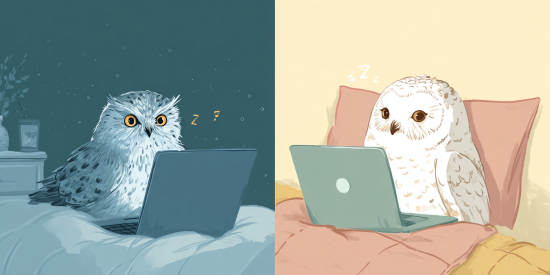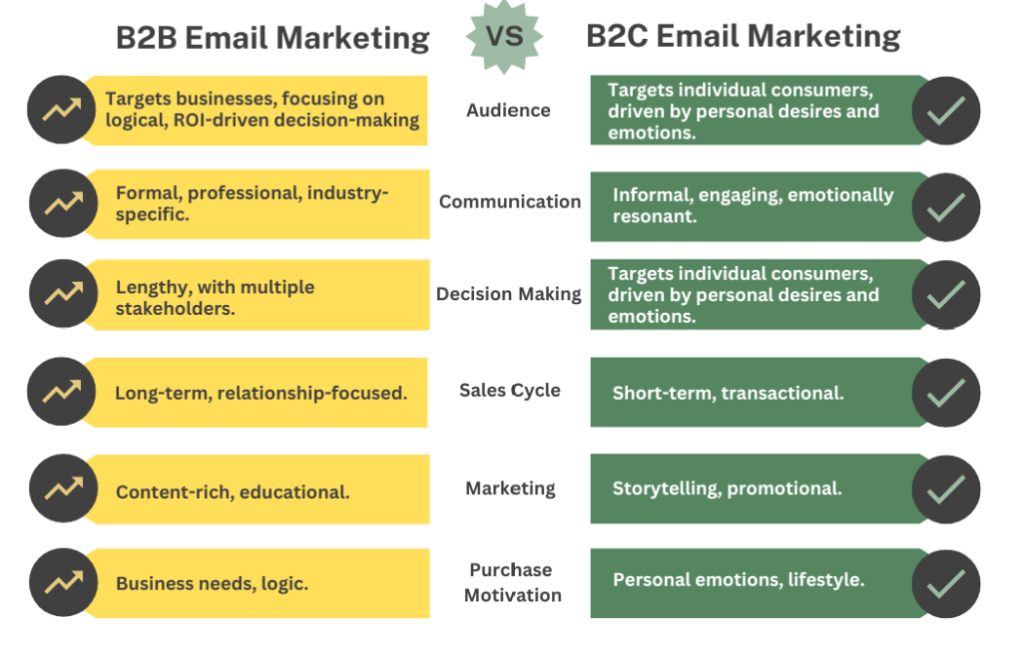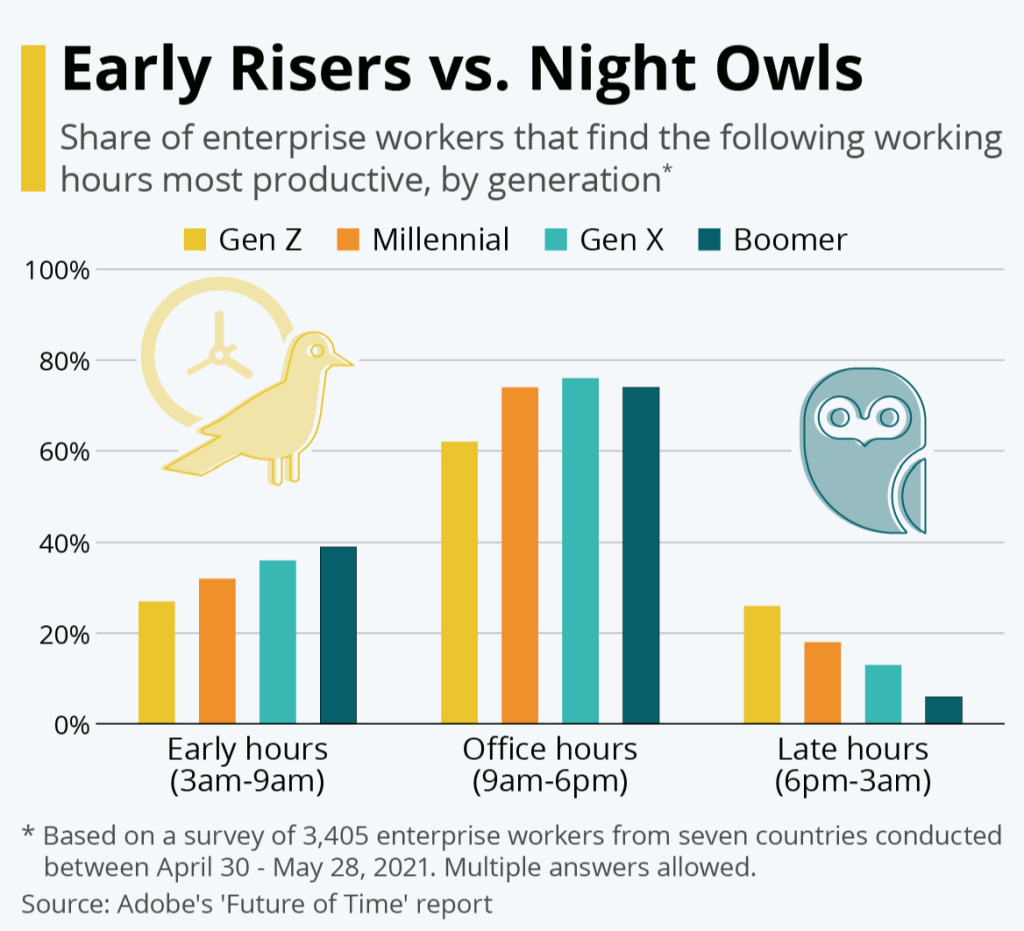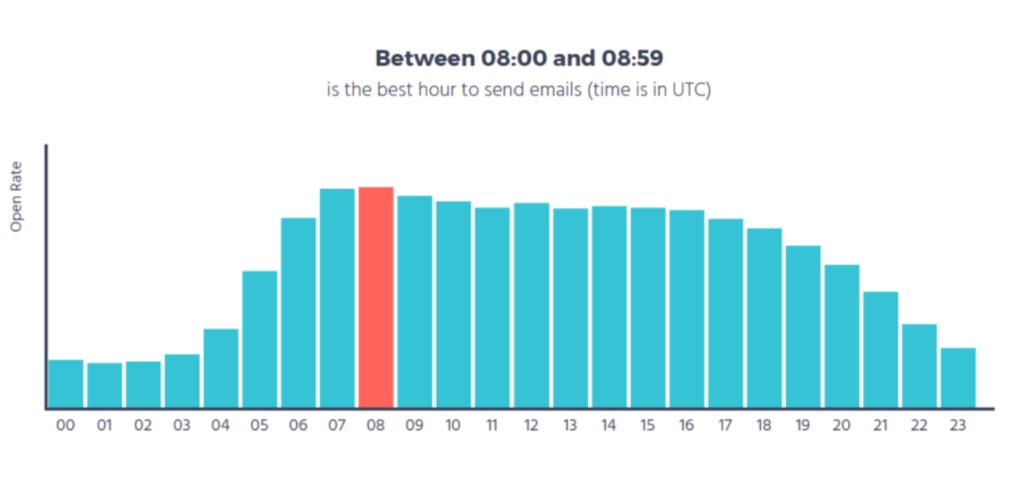- Home
- Friday Column
- Email Marketing for an Early B ...

Some of us start the day by checking emails at 6 a.m. with coffee, while others prefer to get to their inbox at 11 p.m. when they are in bed. Our routines vary, and so do our natural waking and sleeping patterns. And this is one more aspect that email marketers need to take into consideration if they want to succeed.
Why does timing matter so much? The answer lies in the way our bodies and minds run on different rhythms. In fact, there’s a bit of science behind this phenomenon: our internal clocks influence when we feel most alert and when we naturally wind down. So, while one person’s brain is sharp and ready at 7 a.m., another’s might not fully wake up until much later in the day.
The good news is that while we can’t eliminate people’s daily cycles, we can work around them by planning our email send times wisely. By understanding whether your target audience is full of early birds or night owls (or a mix of both), you can send emails when recipients are most alert and receptive. This article will break down early bird vs. night owl behaviors and show how to tailor your email marketing schedule to each group’s routine.
Early Birds vs. Night Owls: What the Research Says About Timing
Human beings have different productivity windows thanks to their biological clocks (often called chronotypes). In simple terms, some folks naturally function best in the morning (the classic early birds, or larks), while others hit their peak productivity later in the day (the night owls). Most people fall somewhere in between, but in any given audience you’re likely to find a segment that skews early and another that skews late. If you recognize these patterns of early birds vs. night owls, you can align the timing of your campaigns with your audience’s daily habits.
Studies back this up. For example, B2B audiences tend to engage with emails more in the morning hours, whereas B2C or lifestyle audiences are often more active in the evenings.
When it comes to understanding who in your audience is the early bird and who is the night owl, it makes sense to look at user behavior and context. In the morning, many people are at their desks or on their phones preparing for the day. It’s the time when they are in planning and productivity mode, and these are usually B2B audiences. If your message arrives in that early bird time window, it can feel especially relevant for this type of people (given your content fits the context).
By contrast, studies show that by the evening, people usually transition into more relaxed routines—lounging with their phone or tablet. At this point, they might be more receptive to leisurely activities such as browsing online shops. That’s why B2C audiences are often more prone to engaging with messages in the evening hours.

Early Birds: What Works and When
The best send times to reach an early bird audience are roughly between 6:30 a.m. and 10:00 a.m. This early bird time window captures people during their morning routine—often starting from the moment they wake up and check their phone, through their commute, or as they settle in at work. Hitting the inbox at this time means your email is near the top when they first look at their messages for the day. Many professionals start checking emails around 7–8 a.m., so consider scheduling your early bird email to land just before or during that period to have better chances at visibility.
💎 And what about an ideal content and tone for early birds?
People who start their day at 7:00 in the morning are often goal-oriented and treasure time. The content that performs well at this hour shall be practical, informative, and preferably concise. It can include:
- Productivity tips or how-tos—resonate with an early bird audience looking to start their day on a productive note.
- Industry news or reports—many people use the early hours to catch up on news relevant to their job or interests.
- Announcements and updates that require action—morning is the most alert time for the early birds, so it is perfect for the content that invites action.
💎 Design tips for morning emails
During early bird time your audience’s mindset is in easy-to-skim mode. If you structure your content in a way that respects that tempo, you increase your chances to see stronger engagement. The best way to do it is to use a clean layout with a clear headline and keep important information and your CTA near the top. That way, even if the reader only glances at the top of the email, they get the essence and the action item.
Minimizing extraneous elements, such as heavy images and long paragraphs, is also wise. The lengthy storytelling goes much better later in the day.

Night Owls: What Works and When
For the night owls, the prime send times are generally in the evening. Studies of email engagement even point to a late-night peak—around 10:30 to 11:30 p.m. This is the period when those who follow a night owl schedule are most active with personal browsing and email checking. In fact, many consumers have a night owl routine of checking emails or social media in bed — one study found over half of Americans have checked email in bed, and about 70% of Millennials admit to checking from bed regularly.
💎 Ideal content and approach for night owls
At 9 or 10 p.m., people are typically more relaxed (or a bit mentally drained from the day), and they are mostly seeking entertainment, comfort, or deals rather than hard work. Here’s what tends to work well:
- Emotional or story-driven content: Night is a great time for content that pulls heartstrings or captivates with a story (ex., a nonprofit sharing a beneficiary’s story).
- Lifestyle and entertainment content: Newsletters with recipes, travel inspiration, or articles to read for leisure will fit perfectly for this mood and time of day.
- Promotions and sales for “me time”: These can perform well at night when people are in a browsing and buying mindset, so it is no coincidence that many retail companies send sale announcements or late-night deals in the evening.
💎 Design considerations and other tips for night emails
Mobile optimization is critical. Most night owls will be viewing your email on a phone or tablet as they lounge. By some measures nearly 60% of emails are opened on mobile devices now, and that skews even higher during evening hours. So, ensure your emails are optimized for mobiles.
Playful, curiosity-driven subject lines. Since the night owls tend not to rush through their inbox, you can be a bit more creative to attract them. The best way to set the premise for curiosity is with a subject line that teases a story (“You won’t believe what our data revealed…”) or promises entertainment (“Late-night reading: 5 travel disasters and how they ended”). Humor and intrigue can go a long way in the evening, when our brains are naturally more relaxed.
Adjust your sending times just a bit. By evening, our inboxes are already stuffed with messages from earlier in the day. So, how can your emails stand out? Using the subscriber’s name in the subject or sending at a slightly off-peak night owl time (say 8:45 p.m. instead of 9 p.m. on the dot) might help it to stand out.
Account for decision fatigue. While night owls have more browsing time, decision fatigue is still real by day’s end. Keep any required decisions (like choosing options or making big choices) simple even at night, because a tired brain might still avoid effort.

How to Know Your Audience’s Timing Style
Knowing general best practices is helpful, but how do you determine if your subscribers are more likely to be early birds or night owls? The answer lies in your data. Let’s look into some strategies that can be helpful with your early bird vs. night owl dilemma:
👉 Use email analytics and tools for open times
Most email service providers (ESPs) offer analytics that show when your emails are opened or clicked. Take a look at a few recent campaigns to see if you notice any patterns. For example, if your newsletter consistently gets a big chunk of opens within an hour of the 6 a.m. send, you’ve likely got a morning-active audience. On the contrary, if a lot of opens are happening late at night, that’s a sign of night owl engagement.
The good news is that you don’t need to do it manually—many modern marketing platforms have features to help with this analysis. If your platform has a contact segmentation by activity time or an AI that suggests optimal send times, take advantage of it. These kinds of tools can automatically create early bird vs. night owl categories, sparing you a lot of manual work and guessing.
👉 Segment by time zone and region
Another thing to consider is that your early birds and night owls can also live in different time zones, which is especially relevant for brands that are doing business internationally. So, in this case, you might need to separate your audience not only by their natural rhythms but also by their region. Using an ESP that sends at local time might be the best idea here. This way, you can set separate send times for early birds in London and in New York. While both groups are the same in terms of their habits, they will still get their emails at different times according to their location.
👉 Consider different demographics
If you have some information about subscriber demographics, you can infer tendencies. While individuals vary, younger audiences often skew toward being night owls, whereas older professionals might be up earlier. A survey in the UK found almost a third of 18–34-year-olds were checking work emails from bed late at night. On the other hand, people 50+ might be more likely to be part of the dawn patrol. If your product is aimed at Gen Z or Millennials, don’t be surprised if late-night campaigns perform well. If it’s aimed at CEOs or retirees, morning might be your best time.
👉 Run A/B tests with different send times
One of the best ways to know your audience’s preference is to test it. Take one part of your list and send them the same email at two different times—half get it in the morning, half in the evening. Keep everything else about the email identical. Then compare the open rates, click-through rates, and, perhaps, conversion rates. If the evening version significantly outperforms, you’ve got evidence your audience leans night owl (at least for that content type or day of week). If morning wins, lean into that early bird schedule. By repeating these tests on different days or with different segments, you will refine your insights with time.
Best Practices for Timing Personalization
Leverage dynamic send time optimization tools
It’s hard to imagine contemporary email marketing without professional email platforms. Providers such as Mailchimp offer send time optimization tools that use data science to figure out when each contact is most likely to open an email. Other platforms, such as Brevo, HubSpot, or Klaviyo, provide comparable features, often called send time personalization or recipient time optimization. These tools take away the guesswork. By using them, you allow the algorithm to schedule your emails on an individualized basis. So, if you have access to such features, it’s only smart to take advantage of them.
Segment and personalize based on data
By observing how people actually interact with your content—again, through professional tools—you can label them early birds or night owls not on guesses but on facts. Many ESPs allow you to create segments using criteria like “opened the X campaign between Time A and Time B.” It might take a little work to set up at first, but it can pay off with significantly higher open rates later. The principle is simple: let your audience’s actions tell you what they want.
Consider inbox fatigue
When you’ve figured out which time works best for different groups of recipients, it does not mean you shall send dozens of emails in those few hours. In fact, a big part of timing strategy is knowing when not to send an email. Just because you could send an email at 6 a.m. and another at 8 p.m. to the same person doesn’t mean you should. If you are tempted to do so, remember the cognitive load theory: when people feel overloaded, they start tuning out.
To Sum Up
The essence of the early bird vs. night owl debate in email marketing is about knowing your audience and acting on real data. By paying attention to when your subscribers are most alert, you make your email send time part of your overall strategy. The science of human rhythms, combined with the tools at your disposal, provides you with an opportunity to embrace all types of users—early birds, night owls, and those in between.
When you understand the patterns behind the night owl vs. early bird behavior and bring them together with your analytics, you create campaigns that feel almost intuitive to your audience. This blend of marketing knowledge, psychology, and even a touch of biology makes your emails smarter and more human.



